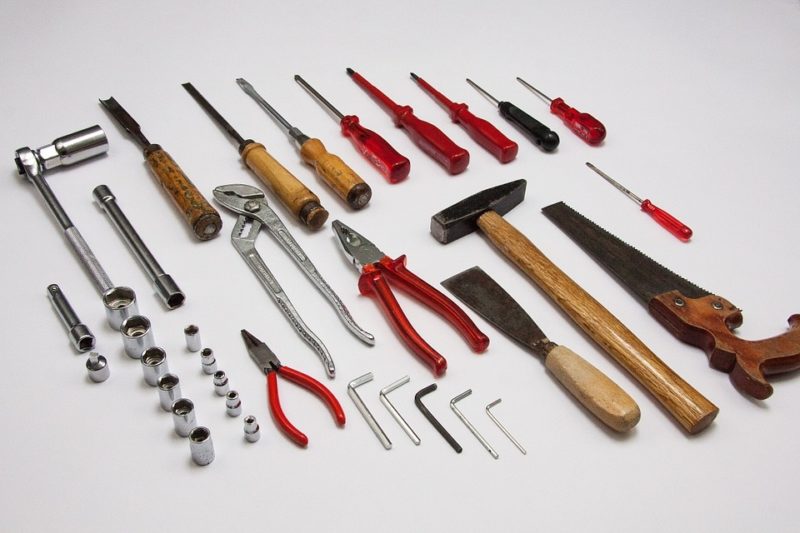Do not worry about learning how to tighten sofa springs because we have simplified it into three steps. In this guide, we will go through the most convenient method to access the inside of the sofa and what you can do about the loose springs. You don’t need special tools but be prepared with the usuals such as pliers, hammers, screwdrivers, and a staple gun.
You can also read this tutorial on fixing sofa springs if you are particular about some spring types. So, with that bonus reference out of the way, let’s get started with tightening your sofa springs.

How To Tighten Sofa Springs At Home
Step 1. Access the internal support of the sofa
- Tip your couch forward to access its bottom portion
- If a fabric covers the underside of the sofa, determine how it’s attached
- You may need to remove the sofa legs first to help you inspect the bottom fabric
- Use the right tool to remove the material, which might be installed with nails, staples, or even ties
- Work the bottom fabric but leave its attachment to the back edge for easier reinstallation later
- Once you’ve removed attachments at the other sides, you can flip the fabric over to expose the internal support of the sofa
Step 2. Twist the loose sofa springs and tighten the attachments
- You should quickly find the upholstery springs inside the sofa when you opened it at the bottom
- The side of the couch that is used often will have the springs that need tightening or reinstalling into their fittings
- The most common issue is loose connection, and tightening the springs will solve it
- Some sofa springs might also need reattachment to their fittings, and you only need to twist them back into place with pliers
- Loose springs that are bended should be flexible enough to turn back into the middle of the fitting
- Depending on your sofa, you may need to tighten the screws to fix the loose sofa spring
- Some sofa springs also attach to their fittings with nails, and you can tighten them into place with a hammer
Step 3. Check for other issues and finish
- Since you’re tightening the sofa springs and have access to the inside of the couch, check all the fittings as well
- Besides loose attachments that need twisting or tightening, some springs and fittings might also be broken
- Be wary of handling such damages as it’s safer to bring the couch to a proper furniture reupholstery center
- If you can’t immediately have the damages repaired, you can fix sagging sofa cushions by restoring the base support with plywood
- You can then reattach the bottom fabric after the fixes
- Pull the fabric and stretch it toward the opposite edge to get the previous fitting
- Secure the unattached sides with a staple gun
- Install the sofa legs if you removed them and turn the furniture upright
Can You Replace The Springs In A Couch?
You can replace the sofa springs if you know what type your furniture has. It can either be serpentine or sinuous, and it’s better to check the place where you bought the sofa to find the correct springs. It’s possible to do the spring replacement at home, but you might need special upholstery tools like a spring stretcher, depending on your couch.
Furthermore, remember that springs are not meant to last forever. They provide support for the couch, making them prone to wear and tear. Decide if it’s more reasonable to get new furniture, especially if it’s the end of the sofa’s lifespan.
How Do I Know If My Couch Springs Are Bad?
It should be easy to identify if your couch springs are bad because you will feel and notice sinking in the sofa. The surface is sagging or has lumps that lead to discomfort and poor sitting support. Some sofas will even pop springs at the bottom, or you will hear a creaking noise each time you sit down.
How Much Does It Cost To Repair Couch Springs?
The amount you’ll spend to repair sofa springs can be anywhere from $20 to $1000. This is because of the costs for the springs themselves and the tools needed if you’re repairing the springs at home. The prices will even be higher if you bring the sofa for a re-upholstery service, which is why it might be sensible to buy a new couch instead.
Can You Fix A Stretched Spring?
You can fix a stretched spring or re-tension it at home, but it depends if your sofa has existing cord threads. When you inspect the inside of the couch by opening its underside, the individual springs have cord threads. You only need to pull to tighten them and restore the spring tensions.
Conclusion
If you notice a loss of support when sitting, the sofa springs might be to blame. We have discussed how to tighten sofa springs at home by opening the couch’s underside and accessing the springs. You only need to twist them in place or tighten them to their fitting via the screws or nails.
If the springs have lost their tension, find the cord threads and pull them to fix the stretched springs. But in some cases, it might be better to bring the sofa to an upholstery center if you don’t have the tools. Overall, DIY repairs are possible at home as long as you know how your furniture works.
Read this guide on fixing the cable on the reclining sofa if your recliner has an issue.
